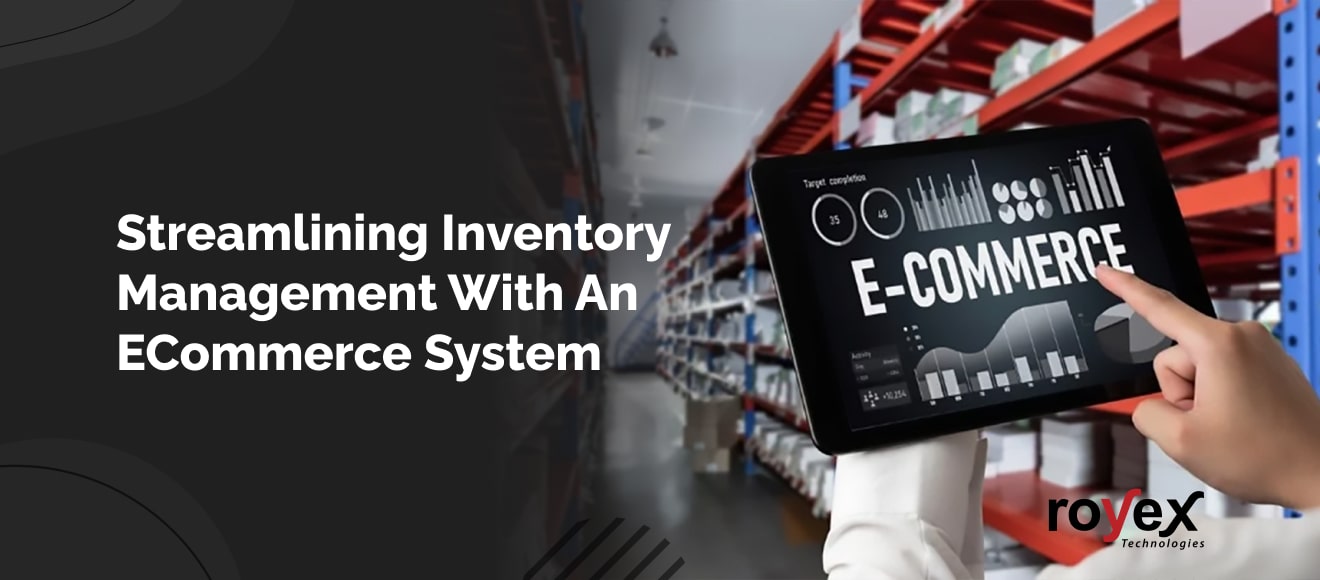
Streamlining Inventory Management with an eCommerce System
In the dynamic world of eCommerce, where customer demands can change in the blink of an eye and competition is fierce, efficient inventory management is the linchpin of success. Your ability to fulfill orders accurately and quickly can mean the difference between a satisfied customer and a lost opportunity. That's where an eCommerce system steps in, revolutionizing the way businesses handle their inventory and ensuring seamless operations.
Inventory management is a complex dance that involves tracking, ordering, storing, and distributing products. The right amount of stock must be available to meet customer demand, but not so much that it ties up resources or leads to wastage. This fine balance can be challenging to achieve without the aid of a robust eCommerce system.
Here's how an eCommerce system can streamline your inventory management:
Real-Time Inventory Visibility

With the dynamic nature of eCommerce, the ability to have real-time visibility into your inventory is a game-changer. Imagine being able to check your stock levels at any moment, from anywhere, and see exactly what's available, where it's stored, and where it's currently being shipped. This level of transparency empowers you to make informed decisions about restocking, ensuring that you never run out of in-demand products or waste resources on excess inventory.
Real-time inventory visibility goes beyond the warehouse. It extends to your online store, allowing customers to see product availability instantly. When they can trust that a product is in stock, they are more likely to make a purchase. This feature is not only convenient for customers but also a key driver of higher conversion rates.
Moreover, it benefits your team as well. Sales and customer service representatives can provide accurate information to customers, and procurement teams can make data-driven decisions about inventory replenishment. The result is a smoother and more efficient operation with less risk of overstocking or running out of popular items.
Order Processing Efficiency

Efficiency in order processing is at the heart of a successful eCommerce business. When orders flow smoothly, you reduce the risk of costly errors, ensure accurate order fulfillment, and meet customer expectations for prompt delivery. This is where an eCommerce system shines.
Imagine that a customer places an order on your online store. With an eCommerce system in place, the order is automatically processed, eliminating the need for manual data entry. It can also prioritize orders based on various criteria. For example, it can consider the chosen shipping method, customer location, or even the urgency of the order. This means that orders are processed in an order of priority, ensuring that you meet delivery deadlines efficiently.
Efficient order processing is not just about speed; it's also about accuracy. The automation provided by an eCommerce system significantly reduces the risk of human errors in the order fulfillment process. This means fewer mistakes, fewer returns, and more satisfied customers.
Inventory Forecasting

One of the key challenges in inventory management is predicting future demand accurately. Overstocking can tie up valuable resources, and running out of popular items can result in missed sales opportunities. This is where inventory forecasting comes into play.
An eCommerce system with built-in analytics and forecasting tools can be a game-changer. It uses historical data and various algorithms to predict which products are likely to be in demand and when. This data-driven approach allows you to adjust your inventory levels accordingly, ensuring that you have the right amount of stock at the right time.
For example, if your eCommerce system predicts a surge in demand for a particular product during the holiday season, you can proactively increase your stock levels to meet the expected demand. This minimizes the risk of running out of stock during peak sales periods and maximizes your revenue potential.
Inventory forecasting is a proactive approach that helps you stay ahead of market trends and customer preferences. It reduces the need for reactive decision-making and empowers you to make strategic choices that benefit both your customers and your bottom line.
Multi-Channel Integration

In today's eCommerce landscape, many businesses sell their products through multiple channels. This may include their own online store, physical retail locations, and third-party marketplaces like Amazon and eBay. Managing inventory across these various channels can be a significant challenge.
An eCommerce system is designed to simplify multi-channel inventory management. It syncs your inventory across all sales channels, ensuring that you don't accidentally oversell a product that you've run out of. This centralization of inventory data streamlines order management and reduces the risk of inventory errors.
For example, if you sell a product on your website and through a marketplace like Amazon, any sale made on one channel automatically updates the available stock on all other channels. This means that if you sell out of a product on your website, the same product will be marked as unavailable on Amazon, preventing orders for products you don't have.
Multi-channel integration simplifies your inventory management, reduces the risk of overselling or underselling, and provides a consistent and reliable shopping experience for your customers across all channels.
Reduction in Costs

Effective inventory management can lead to significant cost savings. By optimizing your inventory levels and reducing manual errors, you can lower your carrying costs. Carrying costs include expenses like warehousing, insurance, and the cost of holding excess inventory.
With an eCommerce system in place, you can maintain leaner inventory levels, as you're making decisions based on real-time data and forecasts. This reduces the costs associated with holding excess stock. It also minimizes the risk of obsolete inventory, which can be a significant financial burden.
Moreover, the automation and efficiency brought about by an eCommerce system translate into lower operational costs. When order processing is streamlined and accurate, you can allocate your resources more efficiently, reducing labor costs and the risk of costly fulfillment errors.
Efficient inventory management is not just about boosting revenue; it's also about optimizing your expenses. It's a win-win situation where both your top line and bottom line benefit
In conclusion, inventory management is a critical aspect of eCommerce, and an efficient eCommerce system can be a game-changer. By providing real-time visibility, automating order processing, facilitating inventory forecasting, and centralizing operations, it empowers businesses to meet customer demand effectively while reducing costs. So, if you're looking to optimize your inventory management and stay ahead in the competitive eCommerce landscape, investing in the right eCommerce system is a smart move. This is where Okommerce comes into play.
Okommerce E-Commerce Management System (EMS) is a High Performance, scalable all-in-one E-Commerce Management System for SME, fast growing and Large Businesses. It has customization features and flexibility to create an eCommerce Solution tailored to your unique needs. With Okommerce, you can rest assured that your website won't go down, providing your customers with a consistently fast, reliable, and enjoyable experience. Get Okommerce today. Contact us via email at info@royex.net or call us at +971 56 602 7916 with your requirements to get started.





